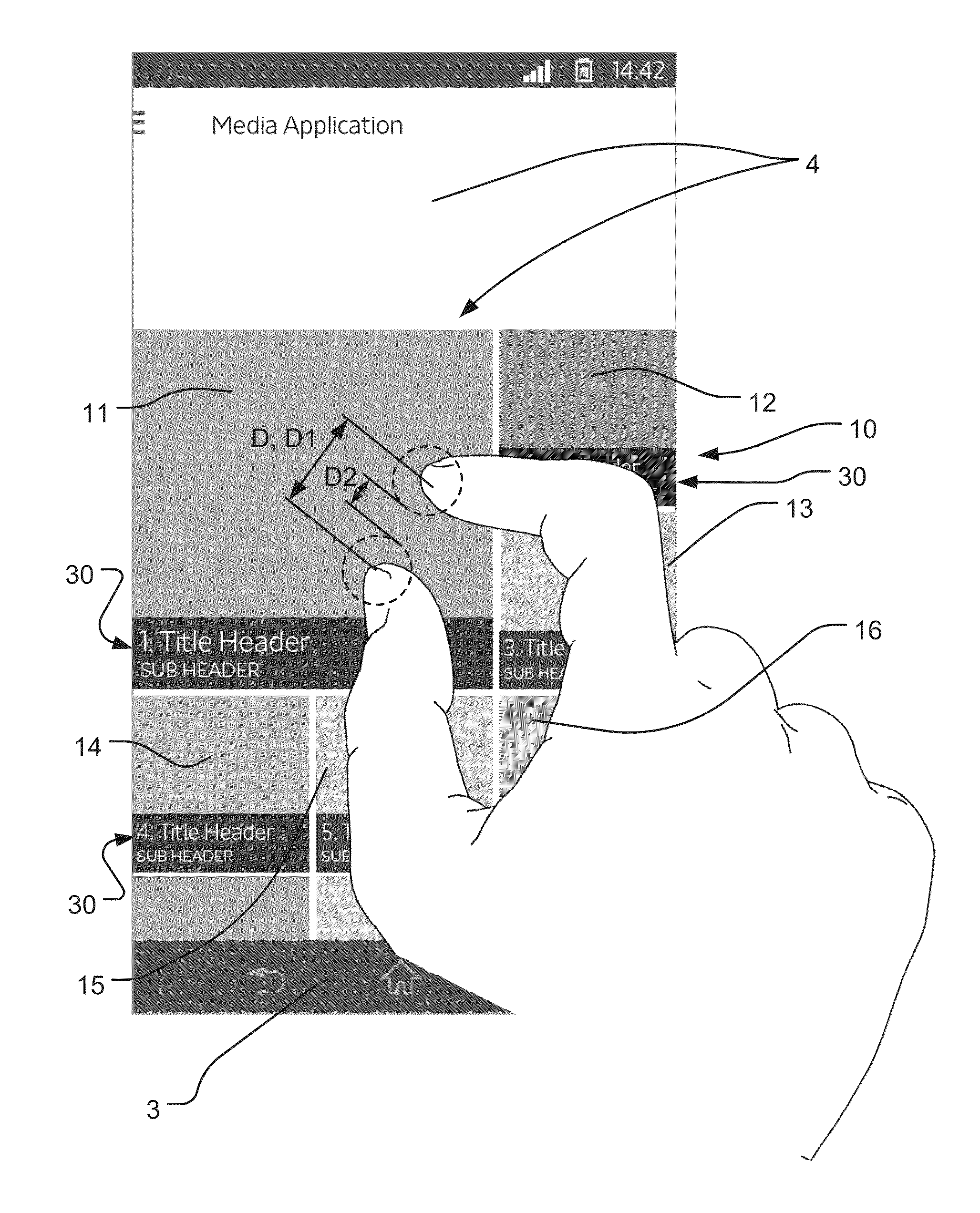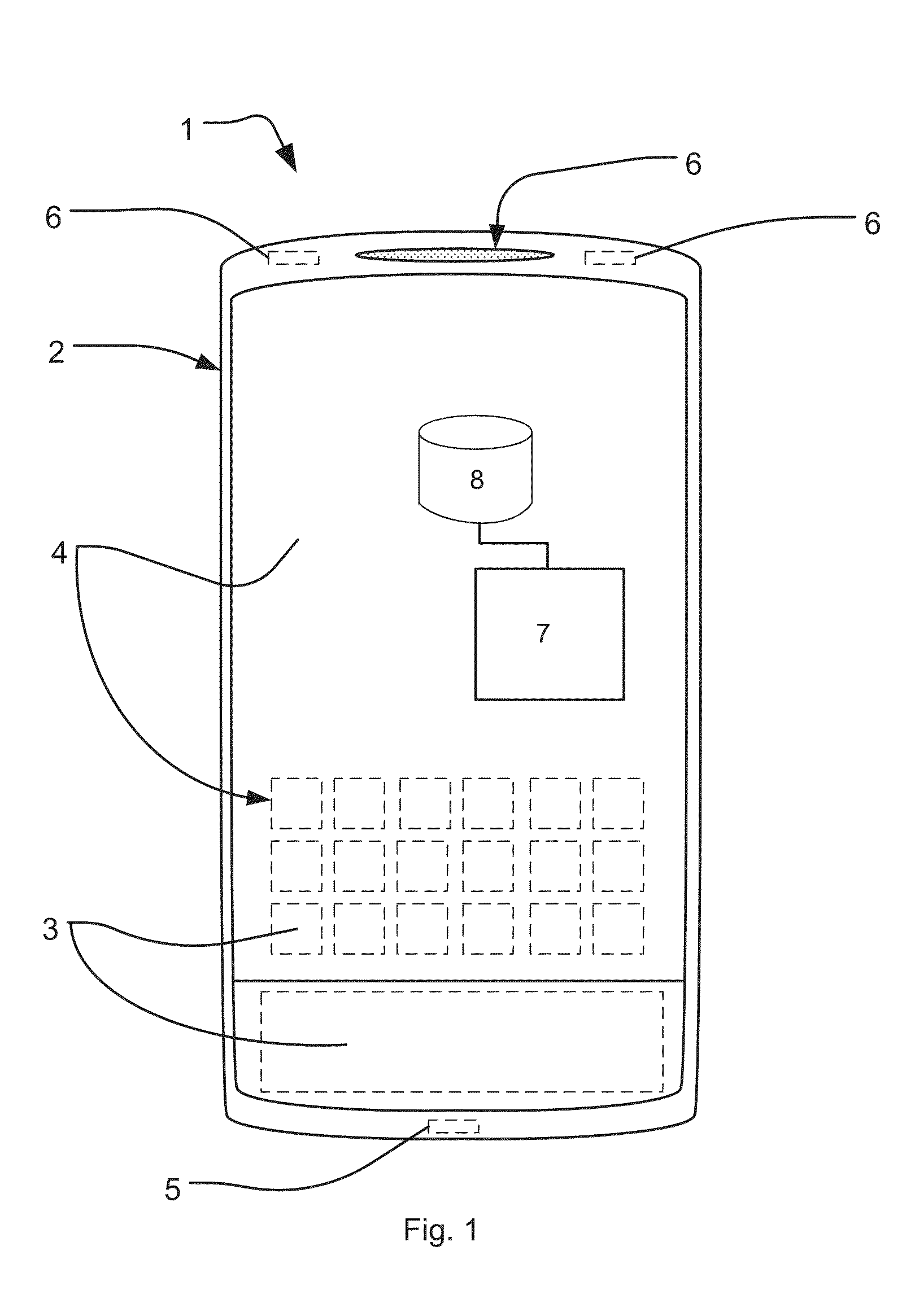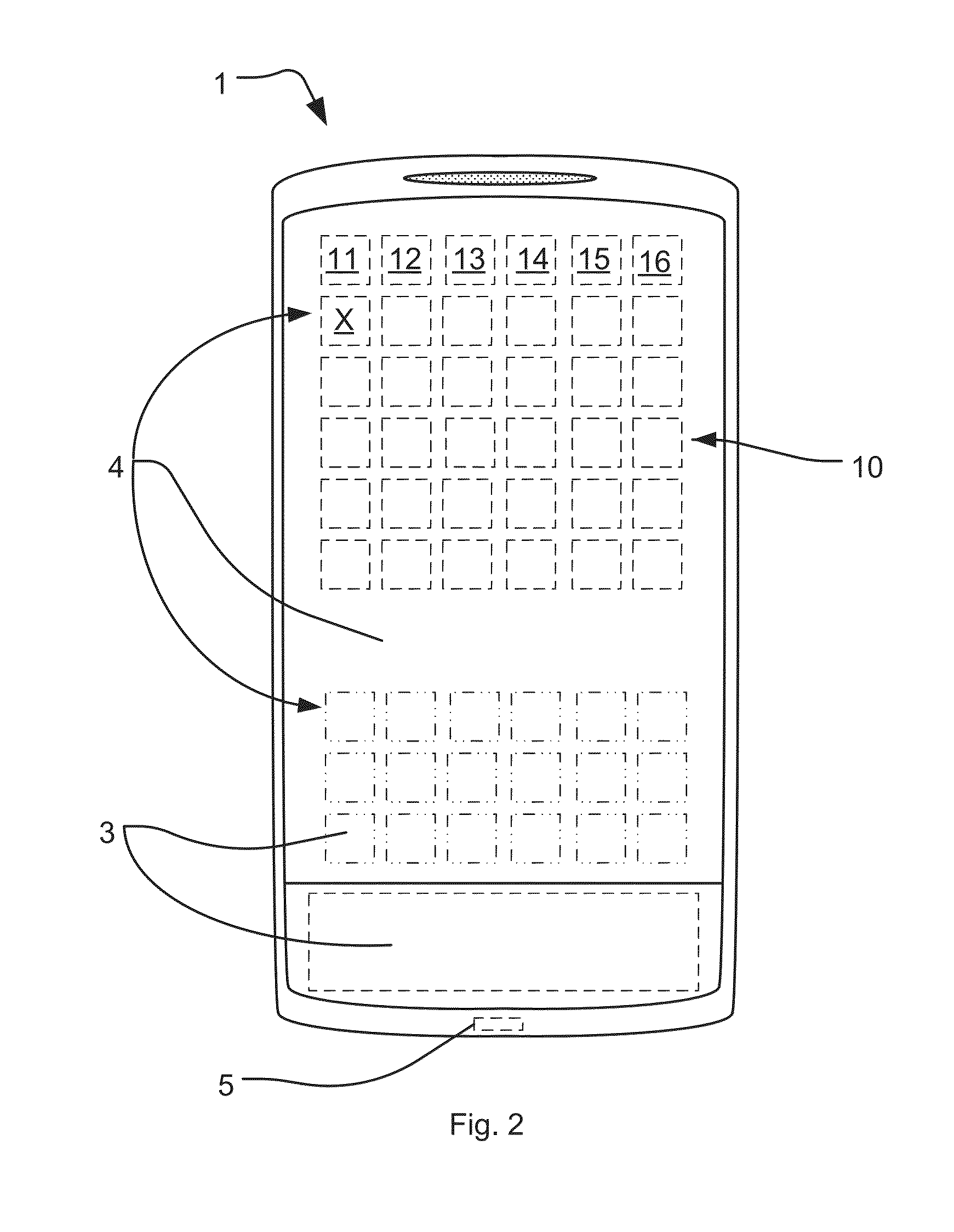Method of controlling a graphical user interface for a mobile electronic device
user interface technology, applied in the field of control of a graphical user interface of a mobile electronic device, can solve the problems of limited user interface, inability to change in a simple way, and often quite complex layout, so as to achieve clear overview of information/content, efficient use, and wide width
- Summary
- Abstract
- Description
- Claims
- Application Information
AI Technical Summary
Benefits of technology
Problems solved by technology
Method used
Image
Examples
Embodiment Construction
[0043]Aspects of the present invention relate, in general, to a radio communication terminal, such as a mobile phone, including one or more marker input devices. Aspects of the present invention relate, in general, to the field of automatically launching different layouts of applications in mobile communication devices. However, for the sake of clarity and simplicity, most aspects outlined in this specification are related to mobile phones. However, it should be appreciated that the invention is as such equally applicable to electronic devices which do not include any radio communication capabilities.
[0044]In the following description reference is made to the accompanying drawings. In this regard entity, dimensional, positional and directional terminology, such as “top”, “bottom”, “front”, “back”, “first”, “second”, “overlaid”, “non-overlay”, “first / second / top / bottom layer”, “larger”, “smaller”, “finer”, “more coarse”, etc., is used with reference to the size, resolution, position a...
PUM
 Login to View More
Login to View More Abstract
Description
Claims
Application Information
 Login to View More
Login to View More - R&D
- Intellectual Property
- Life Sciences
- Materials
- Tech Scout
- Unparalleled Data Quality
- Higher Quality Content
- 60% Fewer Hallucinations
Browse by: Latest US Patents, China's latest patents, Technical Efficacy Thesaurus, Application Domain, Technology Topic, Popular Technical Reports.
© 2025 PatSnap. All rights reserved.Legal|Privacy policy|Modern Slavery Act Transparency Statement|Sitemap|About US| Contact US: help@patsnap.com



